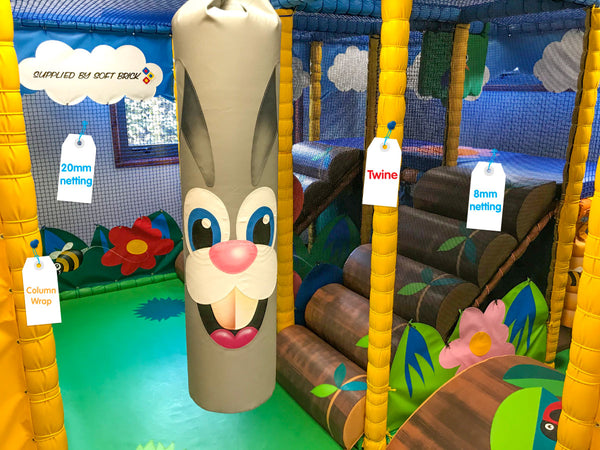Net over it - netting explained!
We love a good pun here at Soft Brick HQ, sorry about that.
We also know our stuff when it comes to netting - there are many different types, available in many different colours, we wanted to explain the difference and when to use which type and where.
Types of Netting
8mm Netting Anti-climb
This netting is quite dense and should be used in areas of forced movement. For example, at the sides of slides, trampoline enclosures, etc. It can also be used where it is felt there is an additional risk of entanglement or high wear.
20mm Netting Anti-climb
This type of netting is used in two distinct areas.
- To prevent children climbing to and above 2000mm in any areas within the play system. Usually around the outer perimeter, but can occur inside the system as well, especially on climbs.
- On the roof of the system to prevent children getting hands through to ceiling fixtures / ceiling mounted lighting that could be otherwise be tampered with.
50mm Netting
A general perimeter net where guides for the use of the finer mesh nets are not applicable.
Fixing Methods & Repairs
We use twine to fix the netting to our soft play structures, not cable ties! Twine is available in various colours and wherever possible we match the colour of the twine to either the netting or the column wrap.
The standard 50mm is relatively straight forward to install and gives you great peace of mind should you need an emergency repair.
As both the 8mm and 20mm Anti-climb netting requires specialist fitting, we do not currently sell this online. However, please contact us - info@softbrick.co.uk or +44(0)1925 837733 and we will be happy to discuss your requirements!
- The Soft Brick Team
